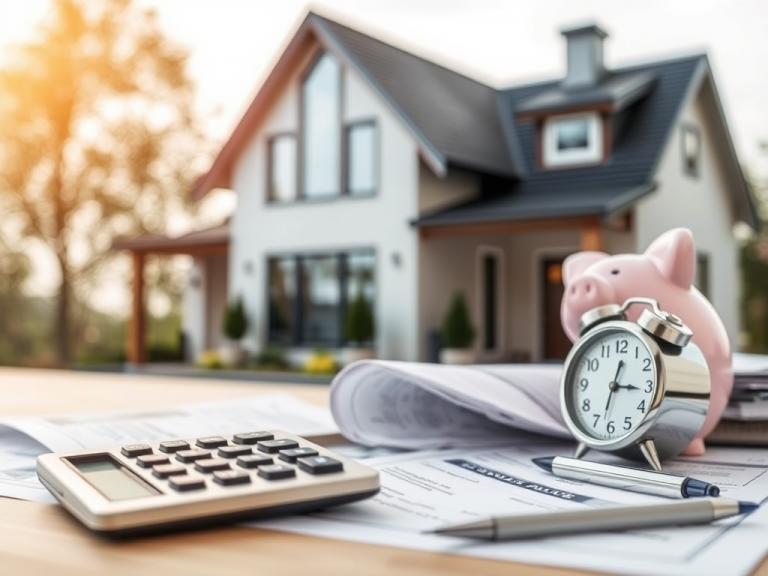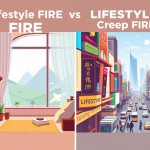When embarking on the journey toward Financial Independence and Retire Early (FIRE), every decision counts — including how you approach homeownership. For many, buying a home is one of the largest financial commitments they’ll ever make. One factor that can significantly impact your monthly budget and long-term wealth-building is Private Mortgage Insurance (PMI). If you’re considering purchasing a home with a down payment of less than 20%, you may find yourself facing PMI, which can add an extra cost to your monthly mortgage payments.
For those pursuing FIRE, understanding PMI and how it fits into your overall financial strategy is critical. In this post, we’ll delve deep into what PMI is, why it’s required, how much it costs, and how it can affect your path toward financial independence. Along the way, we’ll explore ways to avoid PMI, strategies to reduce its impact, and practical tips on managing this expense while staying on track for FIRE.
Background
Private Mortgage Insurance (PMI) is a type of insurance that protects lenders in the event that a borrower defaults on their mortgage payments. While PMI benefits the lender, it’s paid for by the borrower, and it typically applies when a buyer’s down payment is less than 20% of the home’s purchase price. As a result, PMI is commonly required on conventional loans where the down payment is smaller.
For many first-time homebuyers or those with limited cash for a down payment, PMI allows them to access a mortgage without the need for 20% upfront. However, this convenience comes with an added cost, which is usually included as part of the monthly mortgage payment. Understanding how PMI fits into your overall homeownership costs and how it impacts your financial trajectory is important for anyone, especially those who are striving for early retirement.
Key Concepts
Before diving into the specifics of PMI, let’s define some key concepts that will help you better understand its role in homebuying and how it relates to your FIRE goals:
- PMI (Private Mortgage Insurance): A form of insurance paid by the borrower to protect the lender in case the borrower defaults on the loan.
- Down Payment: The amount of money you pay upfront when purchasing a home. It’s typically expressed as a percentage of the home’s purchase price.
- Loan-to-Value (LTV) Ratio: This ratio is the loan amount divided by the home’s value, expressed as a percentage. An LTV ratio of 80% means that the borrower has made a 20% down payment.
- Conventional Loan: A type of mortgage that isn’t insured or guaranteed by the government. PMI is typically required for conventional loans with an LTV ratio higher than 80%.
- FIRE (Financial Independence, Retire Early): A movement where individuals focus on saving aggressively, reducing expenses, and investing wisely in order to retire at an earlier age than the traditional retirement age.
Understanding these key terms is essential to grasp the full implications of PMI and how it may affect your homebuying strategy and your journey toward FIRE.
Detailed Explanation
What is Private Mortgage Insurance (PMI)?
Private Mortgage Insurance (PMI) is a policy that protects the lender, not the borrower, in the event of default on the mortgage loan. It’s generally required for conventional loans when the borrower’s down payment is less than 20%. The reason PMI exists is that a smaller down payment means a higher loan-to-value ratio (LTV), which represents a higher risk for the lender. PMI reduces the risk for lenders, allowing them to offer loans to borrowers who might otherwise be considered higher-risk due to their smaller down payment.
PMI Premiums: These premiums are typically added to your monthly mortgage payments, but they can vary based on several factors, such as your credit score, the size of your down payment, and the value of the home.
How Much Does PMI Cost?
PMI costs can vary widely depending on a variety of factors. On average, PMI premiums can range from $30 to $70 per month for every $100,000 borrowed, according to Freddie Mac. However, this can fluctuate based on:
- Your Down Payment: The smaller the down payment, the higher the PMI cost. With a larger down payment (say, 15% compared to 5%), you’ll pay less in PMI.
- Your Loan Amount: Larger loan amounts usually mean higher PMI premiums because the lender is at greater risk if you default.
- Your Credit Score: A higher credit score signals to the lender that you are a lower risk, which could reduce your PMI costs.
- The Type of Loan: Fixed-rate loans tend to have lower PMI costs than adjustable-rate mortgages (ARMs), since ARMs present more risk for lenders due to potential rate changes.
Here’s an example of how PMI might impact your mortgage payment:
If you’re purchasing a home worth $350,000 with a 30-year fixed-rate mortgage at a 7% interest rate, and you make a 10% down payment (i.e., borrowing $315,000), your PMI premium could range from $94 to $220 per month, depending on the aforementioned factors.
How Long Will You Have to Pay PMI?
PMI is not forever. The good news is that you don’t have to pay it for the entire life of your loan. In fact, there are a few ways to cancel PMI and reduce your mortgage payments:
- When Your Principal Balance Reaches 80%: Borrowers can request to cancel their PMI once the principal balance of their loan falls to 80% of the home’s original value. You can usually request this cancellation in writing once you’ve made enough payments toward the principal.
- When Your Principal Balance Reaches 78%: The lender is required to automatically cancel PMI once your loan balance hits 78% of the home’s original value. However, this cancellation depends on you being current with your payments.
- At the Midpoint of Your Loan Term: On a 30-year mortgage, PMI will be automatically canceled when you reach the 15-year mark, regardless of your LTV ratio. However, you must be current on your payments for this to happen.
Step-by-Step Guide: How to Avoid PMI
If you want to avoid paying PMI altogether, there are several strategies to consider:
- Make a Larger Down Payment: The simplest way to avoid PMI is to make a down payment of at least 20% of the home’s value. If you can afford this, it’s the most straightforward option, saving you from additional monthly costs.
- Consider a Piggyback Loan: Also known as an 80-10-10 loan, this involves taking out a second mortgage to cover part of your down payment. For example, you could put down 10% and use a second mortgage for another 10%, avoiding PMI while maintaining an 80% loan-to-value (LTV) ratio.
- Lender-Paid Mortgage Insurance (LPMI): With LPMI, the lender covers the cost of PMI in exchange for charging you a slightly higher interest rate. While this can lower your upfront costs, it’s essential to analyze whether the long-term interest expenses are worth the trade-off.
- Consider FHA Loans: While FHA loans have their own form of mortgage insurance, they may offer lower rates for borrowers who don’t have 20% to put down. However, this insurance often can’t be canceled and remains throughout the life of the loan.
Tips for Managing PMI While Working Toward FIRE
While PMI can be an unwelcome cost, it’s possible to manage it effectively while pursuing your FIRE goals. Here are some tips:
- Maximize Your Savings for a Larger Down Payment: If you’re in the early stages of your FIRE journey, start saving aggressively for a larger down payment. The fewer mortgage payments you need to make, the faster you can direct your savings and investments toward your retirement fund.
- Refinance Once You Reach 20% Equity: Once you’ve built up enough equity in your home (through your monthly mortgage payments or an increase in your home’s value), consider refinancing to eliminate PMI. This will lower your monthly payments and allow you to focus more on your investments.
- Analyze Your Total Cost of Homeownership: When buying a home, factor in not just the mortgage and PMI costs but also other ongoing expenses such as property taxes, homeowners insurance, and maintenance. Keeping these costs manageable will help you maintain a low cost of living, which is crucial for anyone pursuing FIRE.
- Consider the Long-Term Impact: Every dollar you spend on PMI is a dollar that could otherwise be going into your investments. As you approach financial independence, think carefully about whether buying a home with PMI fits into your overall financial strategy or if it would be better to rent for a while longer.
Case Studies or Examples
Case Study 1: Sarah’s Path to Homeownership and FIRE
Sarah, a 28-year-old teacher, wanted to buy a home in a market with high housing prices. With only 10% saved for a down payment, she knew she’d need to pay PMI. However, she also understood the importance of keeping her housing expenses low while working toward FIRE. Sarah negotiated with her lender to use a piggyback loan for the remaining 10% of her down payment, which allowed her to avoid PMI altogether. As a result, she was able to allocate more money to her retirement fund and investments, helping her accelerate her path toward financial independence.
FAQ
1. Can I cancel PMI at any time?
No, PMI can only be canceled under specific conditions, such as when your loan balance reaches 80% of the home’s original value or when you’ve made enough payments to reduce your LTV ratio.
2. Does PMI apply to all types of mortgages?
PMI is typically required on conventional loans when the down payment is less than 20%. It does not apply to government-backed loans such as FHA, VA, or USDA loans, but those loans have their own insurance requirements.
3. How can I find out my PMI costs?
Your lender will provide you with an estimate of your PMI costs in the Loan Estimate document, which you’ll receive after applying for a mortgage. This will outline the costs associated with PMI and other aspects of your mortgage.
Conclusion
Private Mortgage Insurance (PMI) is an unavoidable cost for many homeowners, especially those pursuing financial independence with smaller down payments. While PMI can add a layer of expense to your mortgage, there are ways to manage it and reduce its impact. By understanding the factors that influence PMI costs, using strategies to avoid PMI, and taking steps to eliminate it as soon as possible, you can keep your path to FIRE on track.
When considering homeownership, it’s essential to weigh the costs of PMI against your long-term financial goals. With the right strategy, you can work toward both owning a home and achieving the financial independence you desire — without being weighed down by unnecessary monthly payments.


